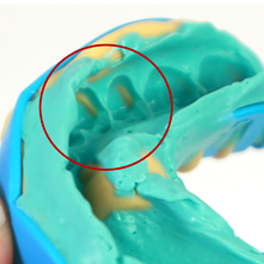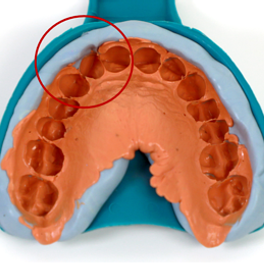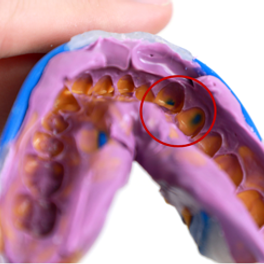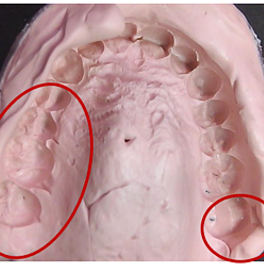
Impression
- All teeth should be clearly impressed without any air bubbles.
- No voids, bubbles, thin walls, shifts, double imprints, drags, pulls or tears.
- Distal surface of the last molar should be properly recorded.
- Make sure you have detailed, accurate occlusal surfaces.
- Not only the teeth but also the gingival margins is reliably precisely impressed (3-4mm beyond margin) – it helps in defining the long axis of the tooth.
- Make sure that the impression material is intact, not damaged or thin.
- In case of doubt double check by pouring a model in stone / plaster for the quality of impression.

A custom smile, an unmatched experience.
Guideline for how to check the errors








